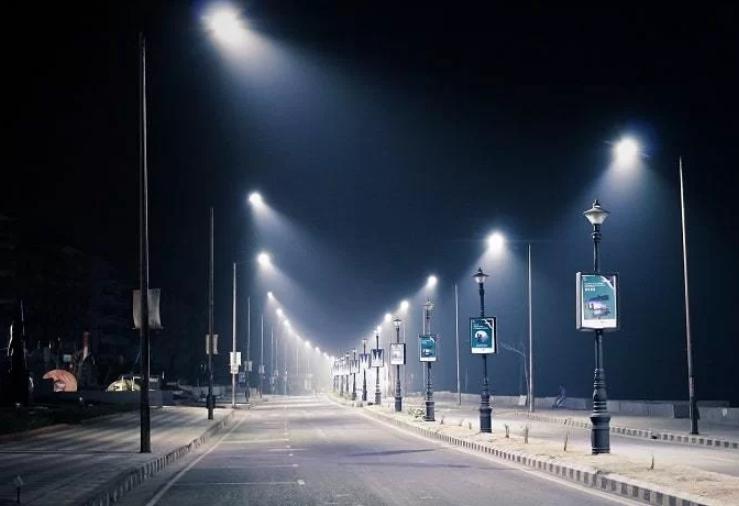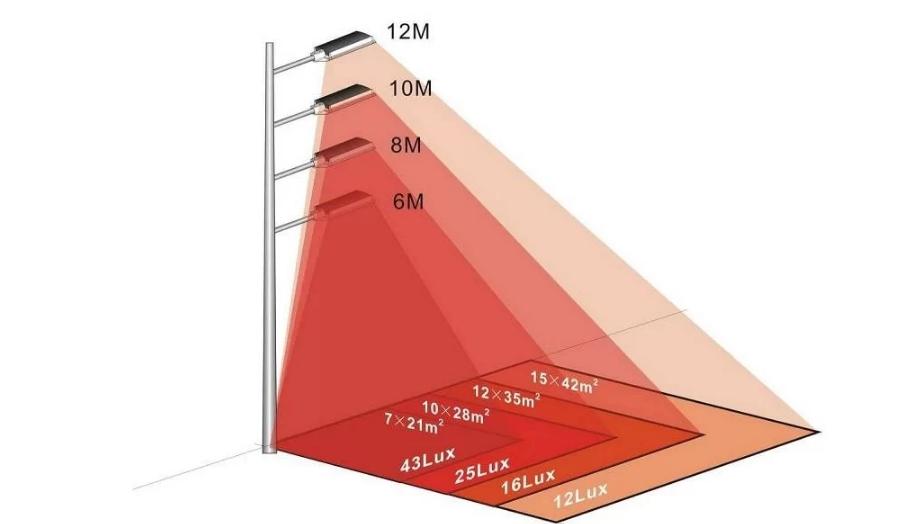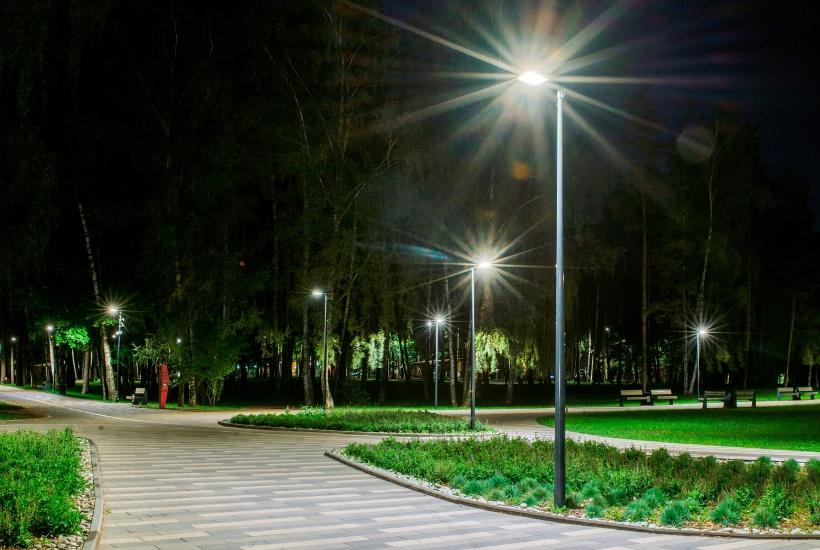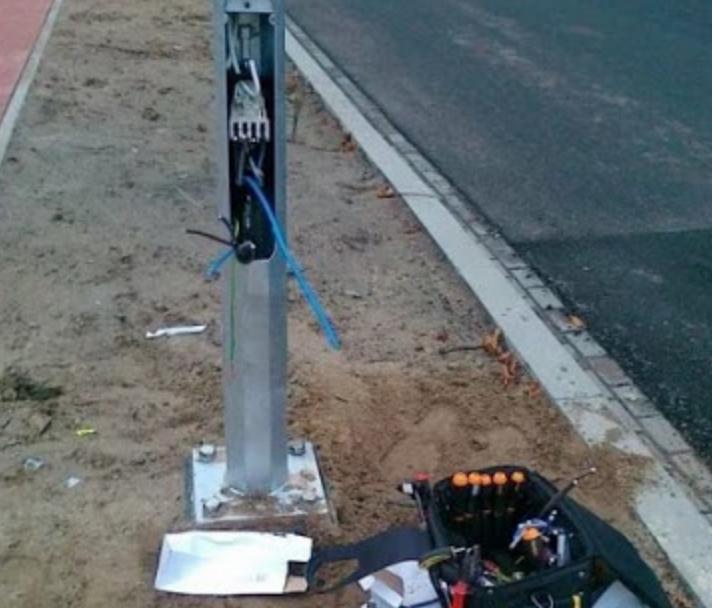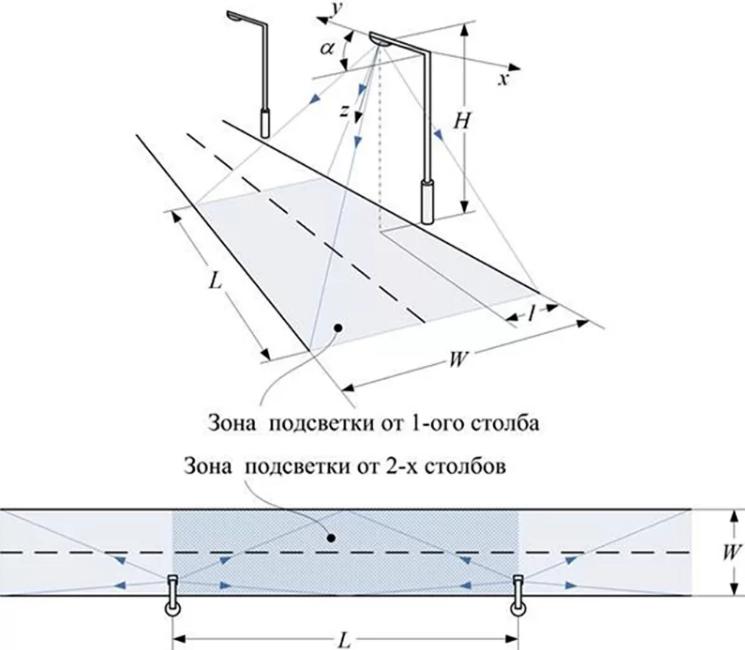Requirements and standards for the height of lampposts
The height of the lamppost depends on the purpose of the structure. Therefore, before installation, you should understand the basic regulations, so as not to make any mistakes and choose the option according to the requirements. In addition, the material of manufacture is also important, as it directly affects the strength, resistance to adverse effects and wind loads.
Maximum and minimum height of lampposts
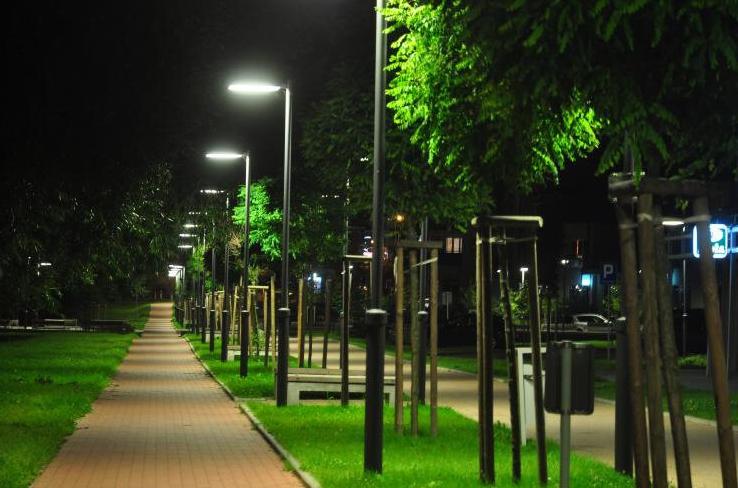
Technical requirements". There is all the necessary data regarding the parameters of the products and requirements for them. As far as the height is concerned, several aspects can be highlighted:
- The minimum height of lighting fixtures for pedestrian zones and park areas is 3 meters, with the maximum depending on specific conditions. Usually it does not make sense to put lights very high, so the average size of supports is 6 meters. For squares and large spaces it is possible to raise the light sources higher to increase the lighting area and reduce the number of fixtures.
- For city streets, carriageways in all types of settlements, the minimum height of poles should not be less than 6 meters, this is the necessary minimum for the passage of medium-duty trucks. As for the maximum, then Most often the poles are not higher than 13.5 meters. But in some cases on special order can be made products to 22 meters, usually used for the manufacture of reinforced concrete or galvanized steel.On streets with vehicular traffic, the height of lanterns should be much higher.
By the way! The height of the lighting pole is not only its above-ground part. If it is installed by concreting, it is located in the ground from 120 to 300 cm, so the total length is greater.
What affects the height of the installation of lighting fixtures
To deal with this point, it is necessary to consider a number of factors. This is the only way to determine the optimal location of the light source to ensure good visibility and avoid any problems during operation. The following should be kept in mind:
- The luminous flux of the luminaire to be installed on the pole. The greater it is, the higher should be placed the plafonds to ensure optimal light levels and not create discomfort for the eyesight. For vehicular lighting, the range is usually from 6 to 13.5 meters. As for pedestrian areas and private areas, for these choose a height of 3 meters, it all depends on the power of the lamp.
- Type of light source. If it is a special version with a distribution of the luminous flux on a certain area, it is often necessary to mount it on a bracket to place it at a certain angle. When using a plafond that distributes diffused light to all sides, the height will be much lower, because in this case you do not need to raise the light source for effective light distribution.
- Material of manufacture. Here it all depends on the technology of manufacture. If metal can be used to make poles of almost any height - from half a meter and more, then concrete does not give such opportunities, usually this material is used to make supports from 4 meters. As for wood and composite materials, there are also different options, it all depends on the purpose of use and design.
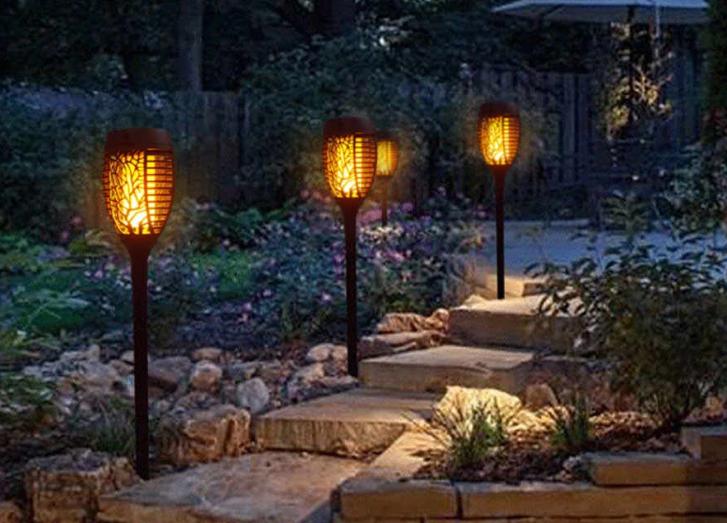
If after installing the lantern it turned out that the light is too bright or, conversely, dim, there is no need to rearrange the lamp. It is easier to replace the lamp, choosing a variant with the appropriate power.
Types of lighting supports by height
The height of the street lamp depends on the purpose and place of installation. There are three main varieties, each of them has its own characteristics, which should be known:
- Decorativeare most often three to six meters tall. 3 to 6 meters high., they usually use fixtures floor lamp type. There can be one or more lamps, depending on the required brightness and place of installation. This option is suitable for the private sector, as well as for park areas, alleys, walkways, etc. Also decorative supports are often used near public buildings, architectural structures, fountains, etc.Decorative options can have different configurations and sizes.
- Outdoor can have a height of from 6 to 12 meters and are used both in settlements of different sizes and on highways. Most often, lights are installed on special brackets, providing an optimal angle of incidence of light and its proper distribution on the roadway. And on the bracket can be installed and more than one lamp, if necessary for quality lighting.
- Special variants can be installed in places with special lighting requirements. They come in different heights - from 15 to 50 m and are most often custom-made to meet increased safety requirements. Usually, metal prefabricated structures are used for such poles, which are connected during installation by welding or bolt fasteners.
The height of the pole of street lighting is adapted to the surrounding conditions, taking into account all objects that might interfere.
At what height on the pole should the lights be placed
There are separate regulations, prescribed in GOST and other documents, which are worth considering when determining the height of the location of the lamp:
- For a summer cottage or Courtyard private house, you need to select the height, based on the characteristics of the site and the purpose of lighting. Usually decorative supports are used for this purpose, which can be decorated. It is best to position the light source so as to prevent its accidental damage.
- When planning the installation of lights on the roadway, consider the location of trees, the crowns should not obscure the light stream. If there are trolley buses on the road, the minimum height of lights should be at least 9 m, for streets with streetcar tracks - from 8 m and more.
- It is also important to take into account distance between lampposts. Pillar spacing should be such that the ratio of height and pitch of the pillars was not more than 1:7, and if used chess scheme installation, not more than 1:5. This allows for uniform illumination and no shaded areas.To ensure uniform lighting, not only the height of the posts should be selected, but also the distance between them.
Lamps should be located above the roadway at a height of at least 6.5 meters. They should be on brackets facing the road or suspended on cables.
The height of installation depends on the location of the lamp. So, on the highway they are placed higher than in the city. In pedestrian zones there are no stringent regulations, there usually proceed from the safety and decorative component.
